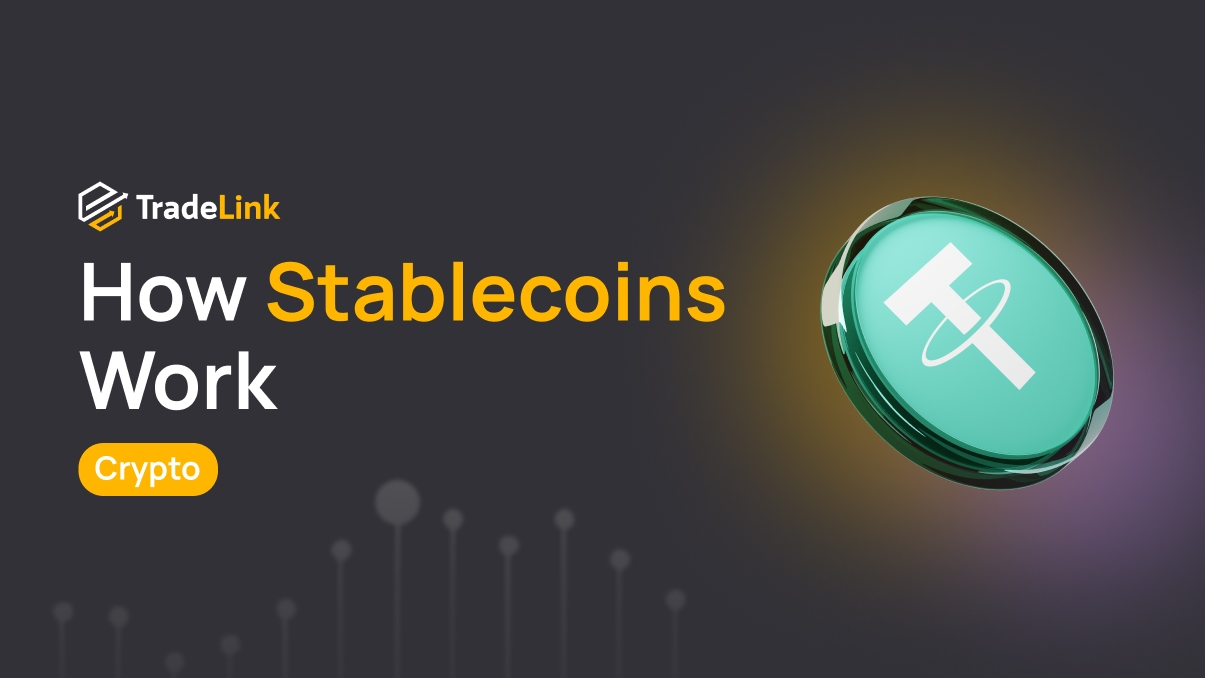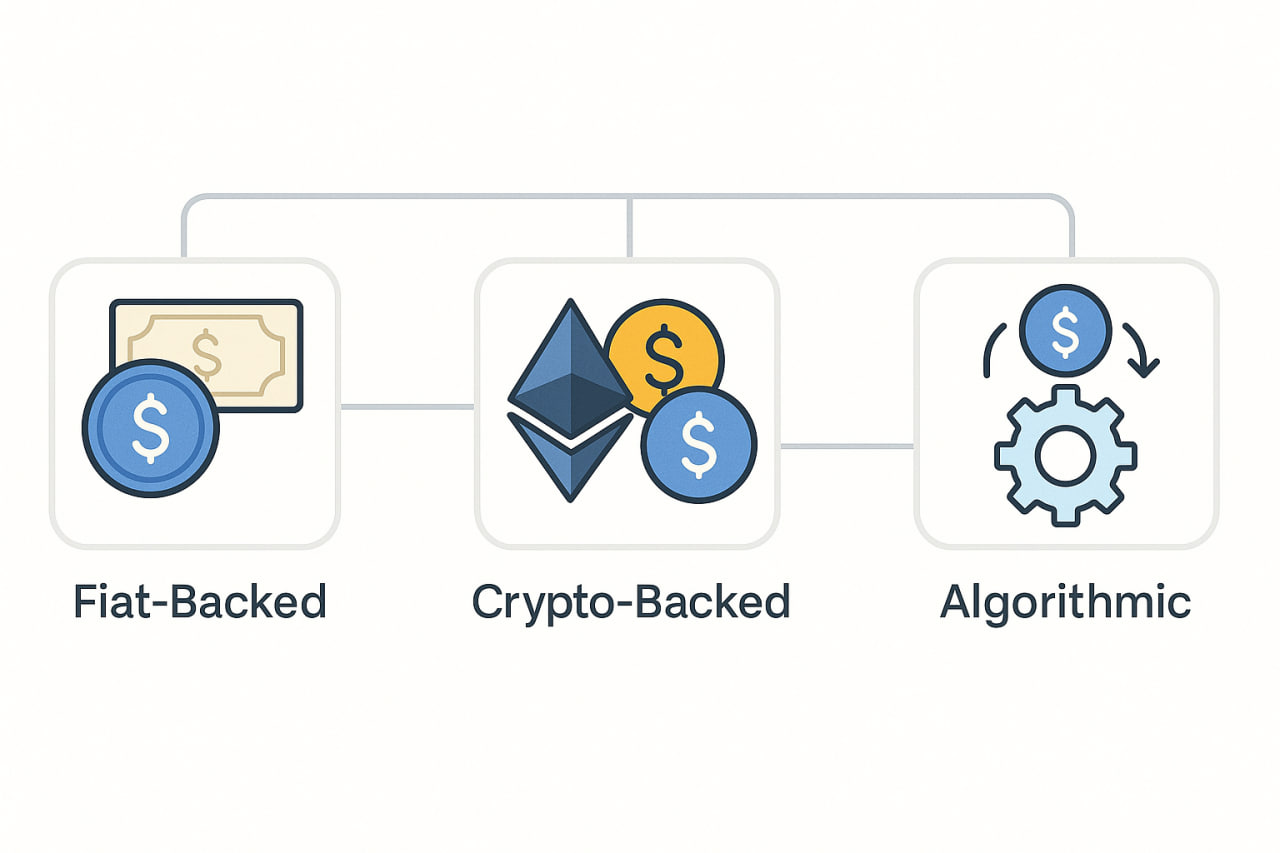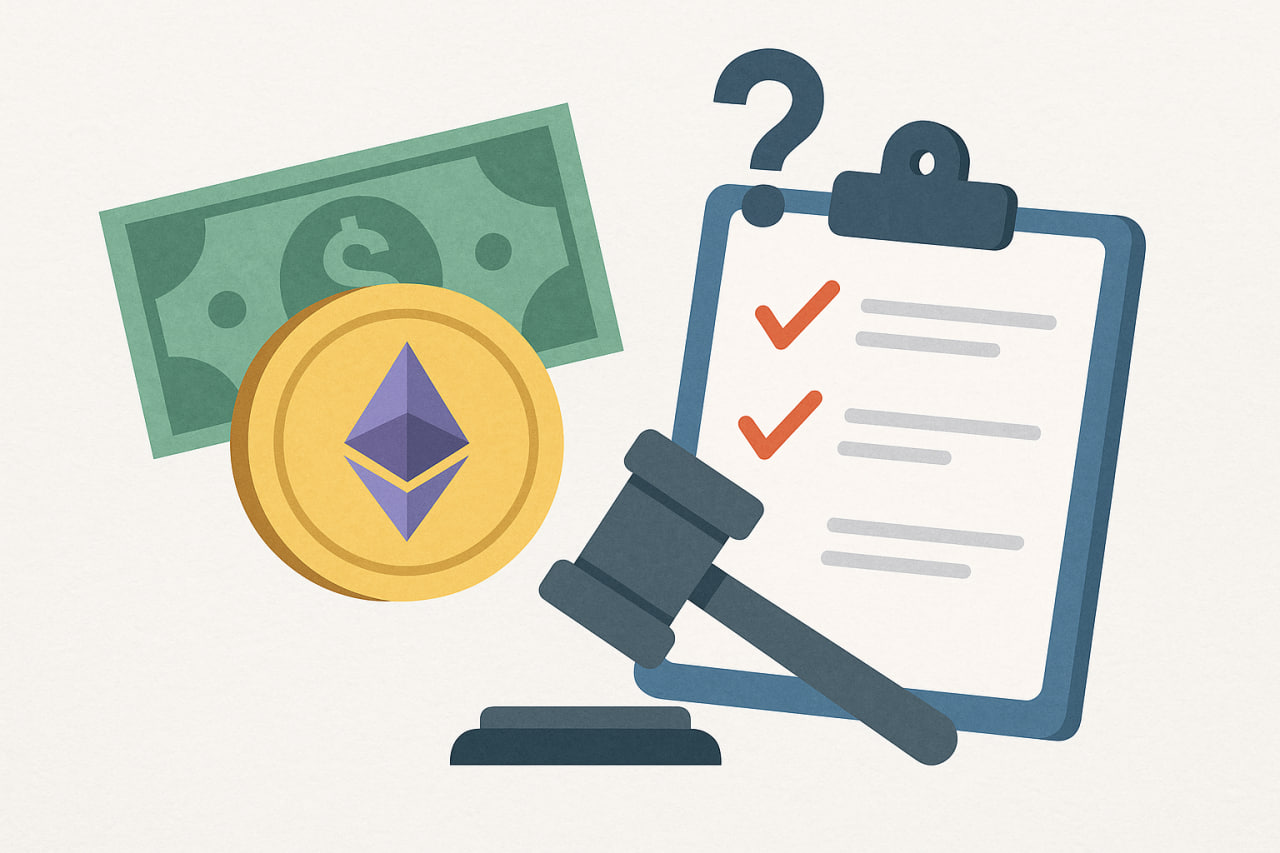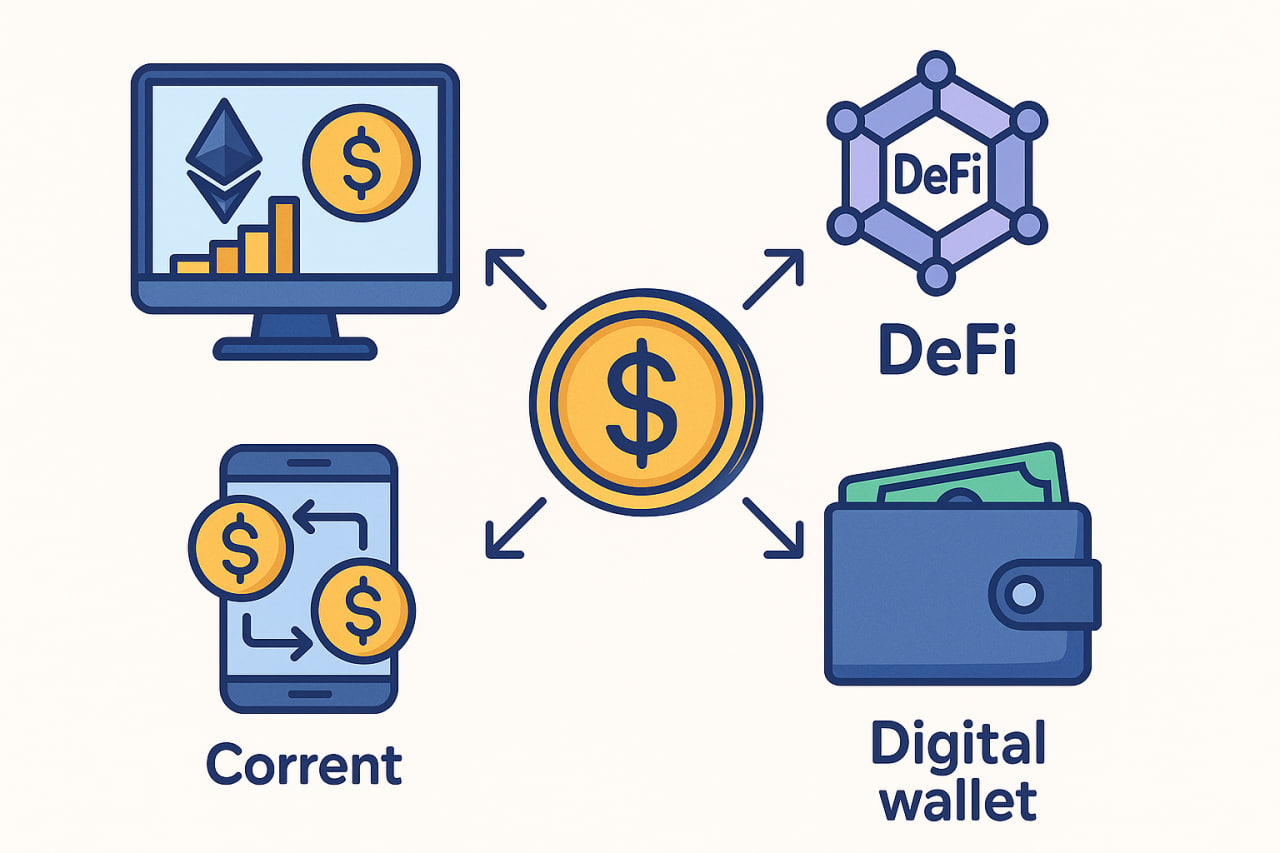How Stablecoins Work: Mechanisms, Risks, and Use Cases

Contents
- Introduction
- What Are Stablecoins
- Types of Stablecoins
- Stablecoin Risks
- Stablecoin Regulation and Legal Uncertainty
- Genius and Clarity Acts in the US
- Stablecoin Use Cases
- Development Outlook
- Conclusion
Introduction
Regular cryptocurrencies often behave unpredictably — their prices can change sharply in a short time. This makes them inconvenient for storing value and everyday transactions. Stablecoins were created as a solution: they maintain a stable price and make working with digital assets easier.
What Are Stablecoins
Stablecoins are a special type of cryptocurrency designed to keep their price at a fixed level. Most often, they are pegged to the dollar. For example, if one such token is worth one dollar, it should always remain so — no matter what happens in the market. The idea is simple: combine the stability of traditional currencies with the convenience of blockchain.
When fiat money loses its value, people look for alternatives. Stable crypto assets become such an option — they are easy to use for payments, transfers, and saving money without fear of significant fluctuations.
Types of Stablecoins

All stablecoins fall into three main categories. Each has its structure and level of reliability.
Type | How It Works | Examples | Pros | Cons |
Fiat-backed stablecoins | Tokens are backed by real money in bank accounts. 1 token = 1 USD/EUR, etc. | USDT (Tether), USDC | Simplicity, high liquidity | Centralised, requires trust in the issuer |
Crypto-collateralized stablecoins | Reserves are locked in smart contracts. The token is backed by crypto (e.g., ETH). | DAI (MakerDAO) | Decentralised, transparent reserves | Overcollateralized, depends on crypto volatility |
Algorithmic stablecoins | Stability is managed by code that adjusts the token supply. No reserves. | UST (Terra, collapsed) | No reserves needed, fully algorithmic | High risk, low trust after Terra’s crash |
Each type works differently. There’s no one-size-fits-all model. The user needs to understand how the token they choose functions.
Stablecoin Risks
Despite their name, stablecoins are not always stable. These tokens have specific vulnerabilities:
-
Loss of the peg. Sometimes, a token should equal one dollar, but its price drops. This happens when the project lacks reserves or can’t handle high demand. The most prominent example is the collapse of UST by Terra. It crashed within days, wiping out billions of dollars.
-
Transparency. If a stablecoin claims to be backed by dollars, it should prove it. Not all projects publish audits or disclose precise reserve data. Without trust, a token loses its value.
-
Regulatory risks. Governments around the world are paying more attention to stablecoins. Some may face bans or tight restrictions. This affects their reliability and availability.
Users must understand: even a stablecoin is not a guarantee. Before using it, it’s essential to know how it works and where its weak points are.
Stablecoin Regulation and Legal Uncertainty

Many countries still lack clear rules for stablecoins. This leaves many projects in a legal grey zone. Some regions are still watching quietly, while others have already proposed or adopted regulations. In the US, Europe, and Asia, discussions continue about who should oversee the stablecoin market and how it should be controlled.
A key issue is reserve requirements. Governments want to ensure that every token truly has a dollar (or equivalent asset) behind it. Some suggest mandatory audits and public reports — aiming for stablecoin transparency. There’s also debate over who should issue these tokens: a licensed company or a decentralised protocol?
Central banks are also studying the impact of stablecoins on financial systems. Some compare them to CBDCs (Central Bank Digital Currencies) and are exploring how both can coexist. This raises questions about the boundary between innovation and regulation.
Due to the lack of global standards, projects face the risk of conflicting rules. Developers need to watch for changes and prepare for new requirements.
Genius and Clarity Acts in the US
In 2025, the US passed two key laws: the Genius Act and the Clarity for Payment Stablecoins Act. These laws marked a step toward precise stablecoin regulation. Backed by the Trump administration, they sparked a lot of debate.
-
The Clarity Act focuses on stablecoins used for payments. It sets basic rules: reserves must back tokens, issuers need licenses, and operations must be transparent. Any company planning to launch a payment stablecoin in the US must now follow these standards.
-
The Genius Act covers digital assets more broadly. It defines who regulates the market — splitting responsibilities between the SEC and CFTC. Before, it wasn’t clear who governed what. Now, crypto projects have a more transparent legal framework.
These laws open new opportunities. Projects can operate legally and attract institutional capital. But not all models fit under the new rules, especially decentralised ones. Developers must study the details and adapt.
Stablecoin Use Cases

Stablecoins have become essential tools in the crypto ecosystem. They serve in many roles:
-
Trading. Most crypto exchanges use stablecoins as a base asset. People trade other tokens against them, and profits are calculated in stable value.
-
Decentralised finance (DeFi). Stablecoins replace volatile assets. Since they’re pegged to the dollar, they offer more certainty. This is helpful for lending, borrowing, liquidity farming, or locking in profits.
-
Cross-border payments. With stablecoins, users can send money quickly without banks. This is useful in places with high fees or poor banking infrastructure.
-
Volatility protection. When markets fall, traders convert assets into stablecoins to avoid further losses. This gives time to think calmly.
-
Payroll. Some companies now pay employees in stablecoins. It’s convenient for global teams who want a unified, stable currency.
Development Outlook
Financial institutions and banks are taking a closer look at stablecoins. Big players are testing ways to integrate blockchain. Some are even launching their tokens. This could increase trust and drive adoption.
There’s also talk of combining stablecoins with CBDCs. We might see hybrid models in the future.
But challenges remain. The main one is balance: users want freedom and innovation, while governments demand oversight and safety.
Conclusion
Stablecoins are now the go-to tool for those who want to use crypto without wild price swings. They make it easy to send money, trade, use DeFi, or simply store funds.
They don’t replace fiat or blockchain. Instead, they bridge the two worlds.
Stablecoins are already at the core of most crypto services — payments, trading, DeFi, and transfers. They’ve become part of the infrastructure and continue to expand their role in the digital economy.